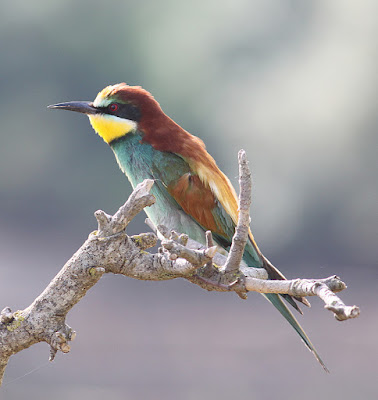Next week’s weather looked dire. Sunday might be the only opportunity to get some ringing done. So with a promised 3mph I drove up to Gulf Lane and an early start.
No Andy today. And he had the single panel nets in his car except for a brand new Ecotone that languished in my boot. I put up the one net but it was shiny and pristine, straight out of the packet from Poland and by now the rising sun lit up the mesh. Mist nets are better when the new shine has worn off and they take on a greyer tone that merges into backdrop of the customary British weather.
Anyway that’s my excuse for catching just 4 Linnets in a couple of hours. And I think the number of Linnets around at 180-200 suggests that this consistent count of recent weeks holds regular birds and few newcomers.
But that miserly four equates to 251 new Linnets for the year of which 194 are from this autumn/ winter. And still not a single recapture.
The Linnet below is a rather smart adult female.
Linnet
All was not lost as I caught a Stonechat, almost certainly the quite distinctive male resident here for the last couple of weeks. I racked my brains to think of the last time I ringed a Stonechat in Lancashire so looked it up on the database - 1993. That timescale is indicative of both the species’ scarcity around here and also its liking for open habitats where ringers are not terribly active.
The Stonechat “took the Micky” for a while and at one point perched up on one of the 4ft high bamboos that held the net and from where it could certainly see the mesh stretching to the other end. Ten minutes later it was lying in the net alongside a Linnet.
In this part of coastal Lancashire the Stonechat is a scarce, partially migrant breeding bird, mainly on the edge of the Bowland hills but occasionally along the coastal strip. In many a spring it is a slightly more numerous and early passage migrant during February to April. Likewise, a migrant in autumn when odd birds may linger into December and beyond or even spend the winter if the weather stays mild enough.
After 25 years I needed to consult “Svensson” to if possible age this obvious male. Through a combination of factors, bill, alula, tail wear and shape, plus the amount of black on the head, mantle and throat, I considered it an adult.
"Svensson"
Stonechat in Svensson
Stonechat
Stonechat
Lots of other birds around this morning, mainly in flight by way of many hundreds of field-grazing Lapwing, Golden Plover and Curlew. Others – Sparrowhawk, Whooper Swans and Little Egrets.
Linking today to Stewart's World Bird Wednesday.
Linking today to Stewart's World Bird Wednesday.





























































































